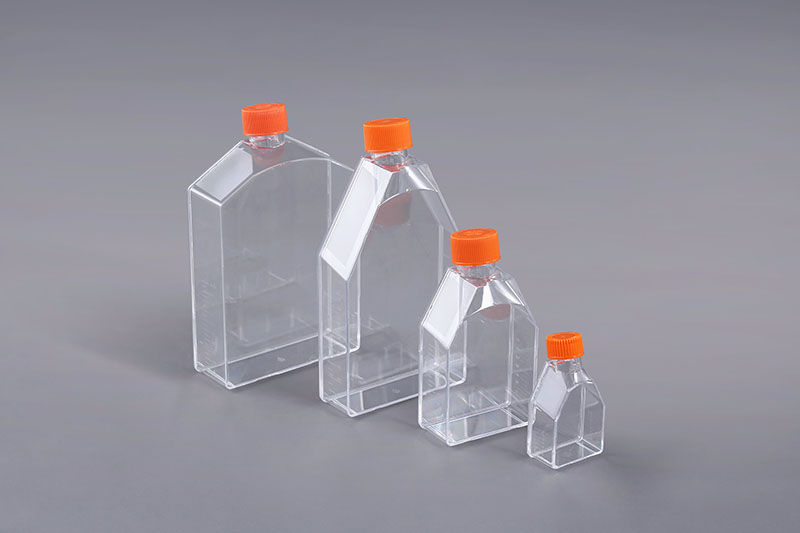Cell lysis is an important experimental method to change cell permeability and activity. It means that after a cell is infected by a virus, the virus uses the nutrients in the host cell to synthesize its own offspring, and then the virus offspring destroys the host cell and is released Out of cells. In cell lysis experiments, cell culture flasks are a common consumable. The steps for cell lysis are as follows:
1. Pour out the culture medium, and buckle the cell culture bottle upside down on absorbent paper so that the absorbent paper will absorb the culture medium (or put the bottle upright for a while to allow the residual culture medium to flow to the bottom of the bottle and then use a pipette to suck it away ).
2. Add 3ml of 4℃ pre-cooled PBS (0.01M pH7.2~7.3) to each bottle of cells. Lay the cells flat and gently shake for 1 min to wash the cells, and then discard the washing solution. Repeat the above operation twice, washing the cells three times to wash away the culture fluid. Discard the PBS and place the culture flask on ice.
3. Add 10ul PMSF (100mM) to 1ml lysis buffer, shake well and place on ice. (PMSF must be shaken until there is no crystals before mixing with the lysis solution.)
4. Add 400ul of lysis buffer containing PMSF to each flask of cells, and lyse on ice for 30 minutes. In order to fully lyse the cells, the flask must be shaken frequently.
5. After lysis, use a clean scraper to scrape the cells on one side of the culture flask (the action should be fast), and then use a gun to move the cell debris and lysate to a 1.5ml centrifuge tube. (The entire operation should be done on ice as much as possible.)
6. Centrifuge at 12000 rpm at 4°C for 5 min. (Turn on the centrifuge in advance to pre-cool)
7. Transfer the centrifuged supernatant into a centrifuge tube for 0.5 min and store it at -20°C.
Cell culture flasks are not only used for cell lysis experiments, but also for medium-scale cell and tissue culture in the laboratory, such as Vero cells, HEK 293 cells, CAR-T cells, CHO cells, insect cells, etc.
The FAI climbed 5.9 percent year-on-year in the first 11 months of 2018, quickening from the 5.7-percent growth in Jan-Oct, the National Bureau of Statistics (NBS) said Friday in an online statement.
The key indicator of investment, dubbed a major growth driver, hit the bottom in August and has since started to rebound steadily.
In the face of emerging economic challenges home and abroad, China has stepped up efforts to stabilize investment, in particular rolling out measures to motivate private investors and channel funds into infrastructure.
Friday's data showed private investment, accounting for more than 60 percent of the total FAI, expanded by a brisk 8.7 percent.
NBS spokesperson Mao Shengyong said funds into weak economic links registered rapid increases as investment in environmental protection and agriculture jumped 42 percent and 12.5 percent respectively, much faster than the average.
In breakdown, investment in high-tech and equipment manufacturing remained vigorous with 16.1-percent and 11.6-percent increases respectively in the first 11 months. Infrastructure investment gained 3.7 percent, staying flat. Investment in property development rose 9.7 percent, also unchanged.
 English
English



















































